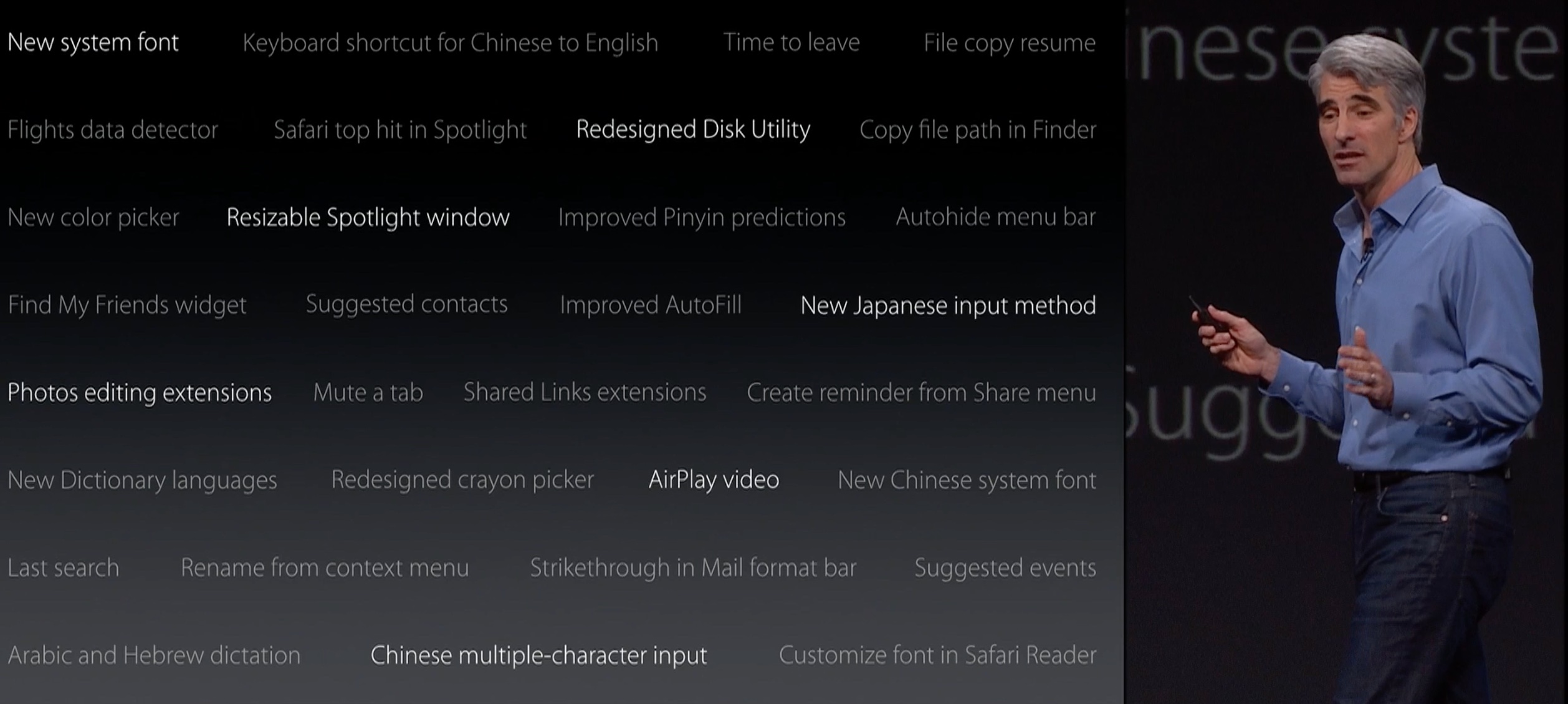Monday’s WWDC 2015 keynote talk was a jam-packed day of announcements that included iOS 9, OS X El Capitan, watchOS 2, Apple Music, the News app and updates to Apple Pay, so much so that Tim Cook had to immediately cut to the chase and skip his opening round of business updates (“Everything is going fine”, he joked).
There just wasn’t enough time to talk about every little enhancement and nice-to-have so Apple execs focused on big ones that make for great headlines while relegating a bunch of platform updates, that mostly matter to developers anyway, to a single slide.
My colleague Cody already compiled an interesting list of nearly three-dozen features in iOS 9 that Apple didn’t talk about during the keynote. If you’ve found his post compelling, you may be interested in my list of technological improvements in OS X El Capitan that Apple didn’t show on stage.
This is what I was able to gather based on a slide Craig Federighi put up during the El Capitan segment, pictured top of post:
- New system font
- Flights data detector
- New color picker
- Find My Friends widget
- Photos editing extensions
- New Dictionary languages
- Last search
- Arabic and Hebrew dictation
- Keyboard shortcut for Chinese to English
- Safari top hit in Spotlight
- Resizable Spotlight window
- Suggested contacts
- Mute a tab
- Redesigned crayon picker
- Rename from context menu
- Chinese multiple-character input
- Time to leave
- Redesigned Disk Utility
- Improved Pinyin predictions
- Improved AutoFill
- Shared Links extensions
- AirPlay video
- Strikethrough in Mail format tab
- File copy resume
- Copy file path in Finder
- Autohide menu bar
- New Japanese input method
- Create reminder from Share menu
- New Chinese system font
- Suggested events
- Custom font in Safari Reader
Again, most of these aren’t headline features and as such will cater mostly to power users and those who write software for a living. But as these technologies make their way into your favorite Mac apps this fall, their impact on your desktop computing should be as profound as ever.
Anything in particular caught your eye?
